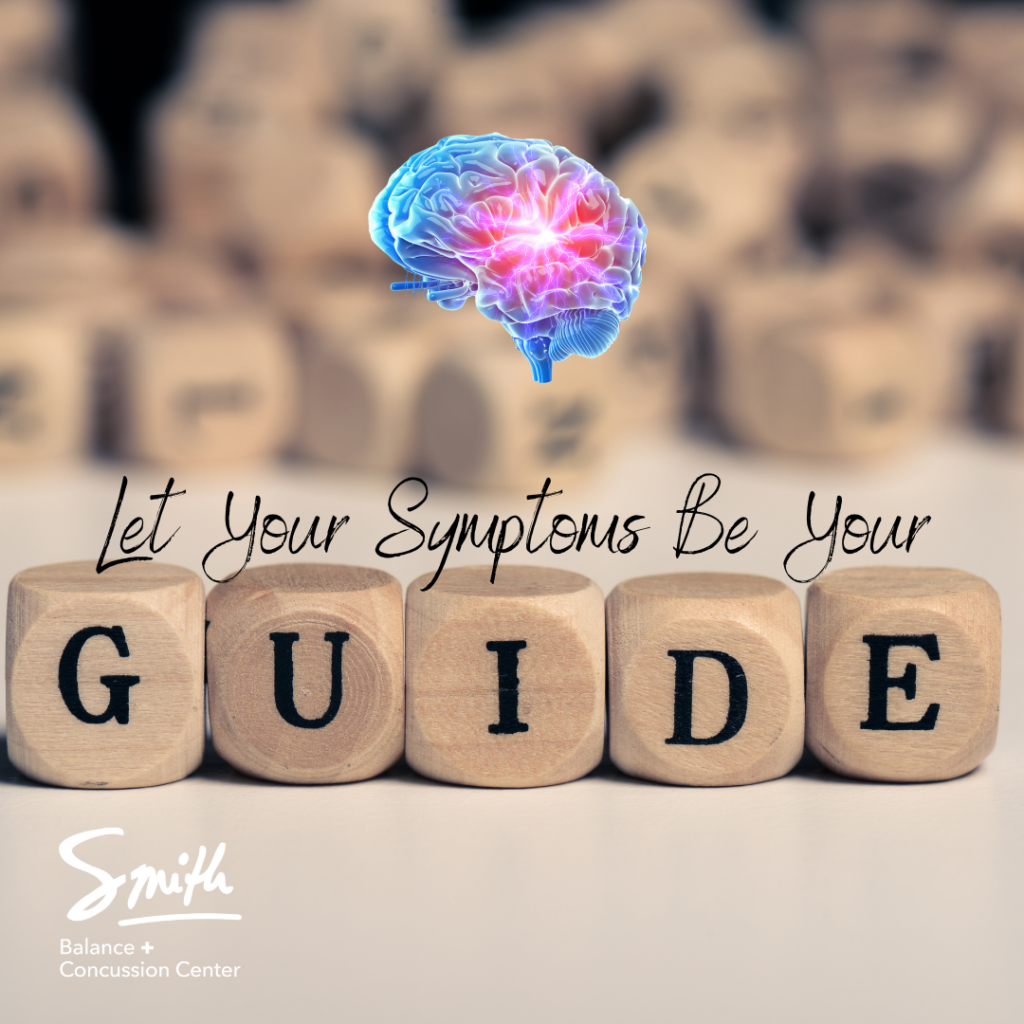
A concussion is a traumatic brain injury.
We need to take them seriously and use the most recent data and research to treat them effectively, just like we do for all other types of injuries and illnesses. Part of the difficulty with treating a concussion is that we can not see the problem. But because the injury is to the brain, there can be a huge variety of symptoms ranging from changes in sleep and emotions, to difficulty with memory, headaches, dizziness, and brain fog. How do we best treat an injury that we can not see? How do we prescribe intensity and durations of exercise or rest? We must go by the symptoms.
Different tools, like the Concussion Symptom Severity Scale, exist to help objectify concussion symptoms. When determining any progression following a concussion - exercise intensity, returning to work, going back to school, easing back into sports - we rely upon this symptom information to guide the process. What exactly does that mean? At the start of each day (or at each therapy session) we should get a baseline “score” for an individual’s primary concussion symptoms. We typically use nausea, brain fog, dizziness and headache as a good place to start. Then, we rate each of those symptoms on a 0-10 point scale (0 = no symptom at all, 10 = most severe intensity ever). As the individual with the concussion progresses through the day, any activity should be stopped if it increases those symptoms more than 2 points on the scale. Here’s an example:
Jamie sustained a concussion three weeks ago. Jamie’s dizziness is 3/10 in the morning. Jamie then goes to work in a home office and after 45 minutes of computer work and virtual meetings, Jamie’s dizziness increases to 7/10. Jamie takes a 5 minute break from the computer and works on techniques learned in physical therapy to help calm symptoms down. Jamie’s dizziness returns to 3/10 and is then able to return to work duties.
In the example above, if Jamie had continued to work and push through the concussion symptoms, Jamie would likely have increased symptoms for the rest of the day, have difficulty completing additional work tasks, and likely have increased symptoms into the next day or two. Pushing too much into concussion symptoms delays the overall healing process.
Following this approach of performing activity based on severity of concussion symptoms should apply to everything that is done following a concussion injury - school, hobbies and recreational activities, exercise, work tasks, household tasks, etc. If you notice that concussion symptoms are lasting more than 10 days, it is strongly advised that you work with a concussion specialist to help you get back to all of the activities you need to do and those that you love to do.
Remember that March every year is Brain Injury Awareness Month. To get more information about brain injuries and the awareness month, you can visit the Brain Injury Association of America.
As always, please contact us if you have any questions regarding concussion management. We are more than happy to help!